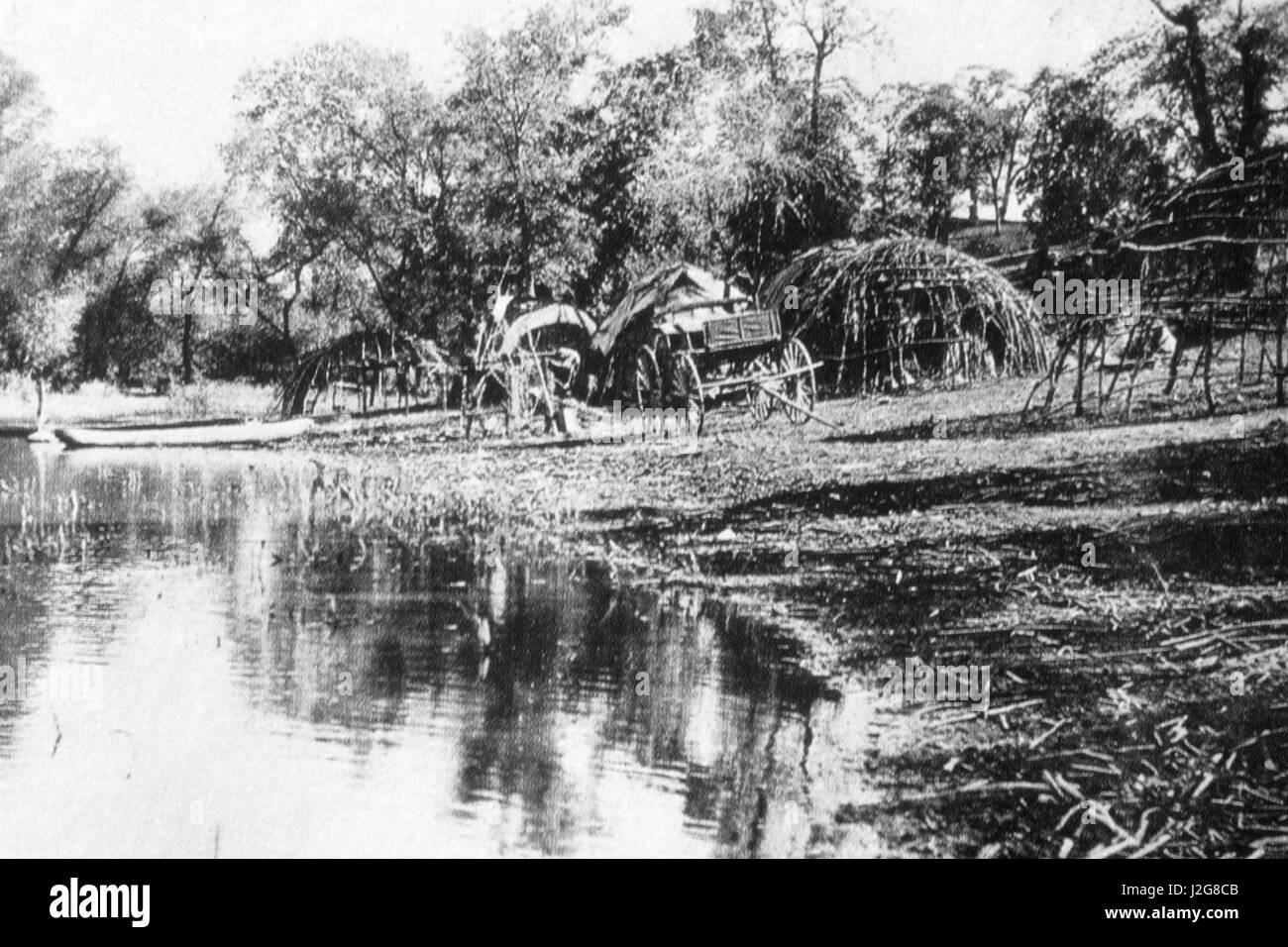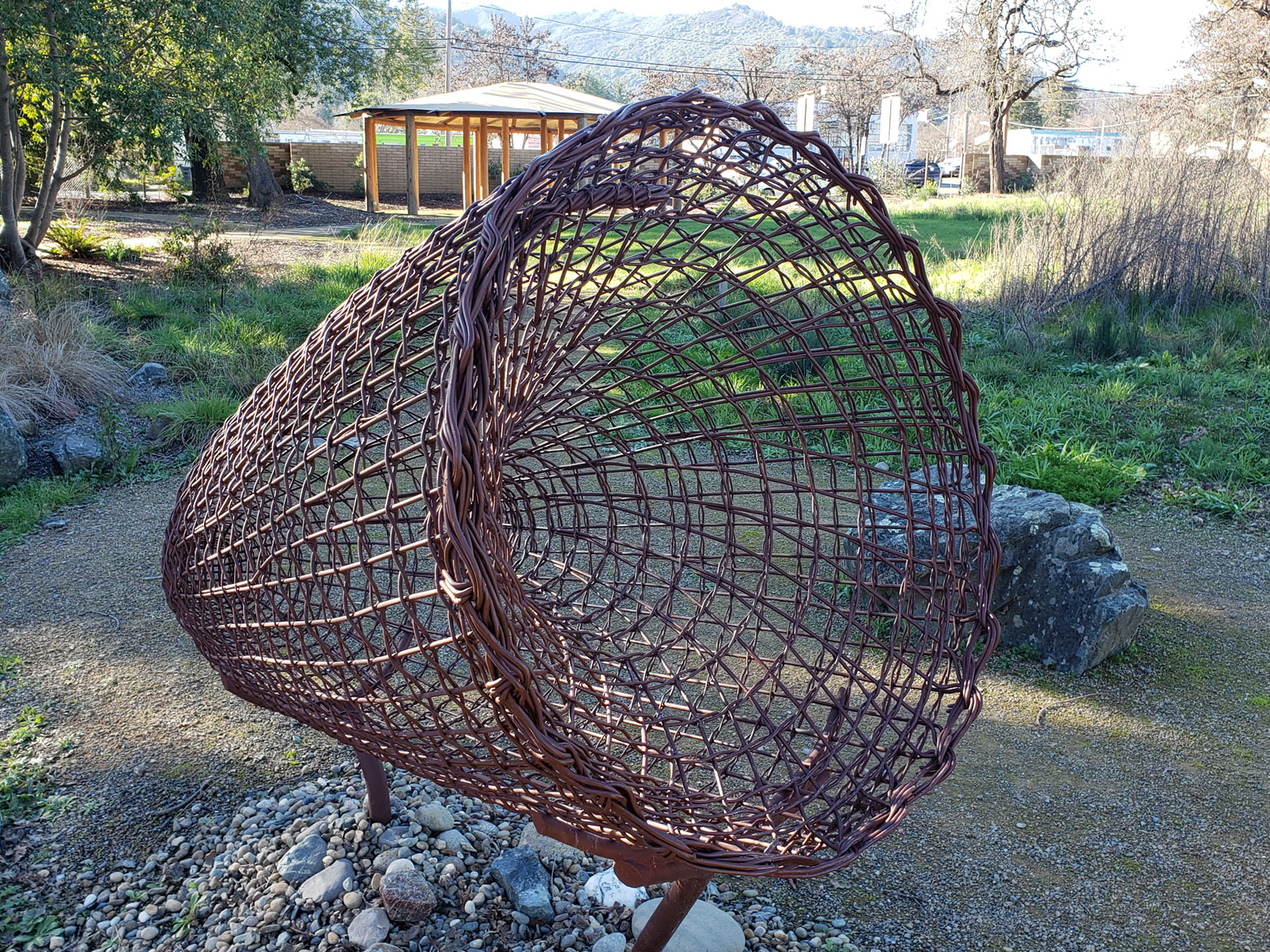
The Enduring Current: Pomo Traditional Fishing and the Lifeline of Resilience
The rhythmic splash of water against a hand-woven net, the quiet wisdom passed down through generations, the scent of fresh fish mingling with the California air – these are not just echoes of a bygone era. For the Pomo people of Northern California, traditional fishing is a vibrant, living practice, a profound connection to their ancestral lands and waters, and a powerful symbol of cultural resilience in the face of centuries of adversity. More than merely a means of sustenance, Pomo traditional fishing embodies a sophisticated ecological knowledge, a deep spiritual bond with the natural world, and a tenacious commitment to preserving their identity.
For thousands of years before European contact, the Pomo, a diverse group of Indigenous peoples speaking several distinct Pomoan languages, thrived across a vast territory stretching from the Pacific Coast to the inland valleys, encompassing the fertile watersheds of the Russian River, Clear Lake, and the vast network of streams and estuaries that once teemed with life. Their lives were inextricably linked to the abundant aquatic resources of their homeland. Salmon, steelhead, lamprey, sturgeon, mussels, clams, and various other fish and shellfish formed the cornerstone of their diet, economy, and spiritual world.
A Legacy of Ingenuity and Sustainability

The Pomo developed an intricate and highly sustainable system of fishing, reflecting a profound understanding of ecological cycles and the behavior of aquatic species. Their methods were remarkably diverse, tailored to specific environments, seasons, and target species, showcasing an ingenuity that allowed them to harvest abundantly without depleting resources.
One of the most remarkable examples of Pomo engineering was the construction of weirs. These sophisticated, often V-shaped or W-shaped structures, typically built from branches, stones, and reeds, were strategically placed in rivers and streams to funnel migrating fish, particularly salmon and steelhead, into collection areas or traps. "Our ancestors understood the river’s flow, the salmon’s journey," explains a Pomo elder from the Dry Creek Rancheria. "They didn’t block the whole river; they guided the fish, ensuring enough went upstream to spawn. It was about balance, about respecting the life cycle." These weirs were not permanent barriers but were often dismantled after the season or designed with gaps to allow for sufficient escapement, demonstrating a deep commitment to sustainable harvesting.
Nets were another cornerstone of Pomo fishing. Woven meticulously from natural fibers like milkweed, iris, and tule, these nets varied in size and mesh, from large seine nets used in open waters to smaller dip nets for individual fish. The skill involved in preparing the fibers, twisting them into strong cords, and then knotting them into precise patterns was immense, passed down through generations. "My grandmother taught me how to prepare the milkweed," shares a young Pomo woman involved in cultural revitalization. "It’s a slow process, but it connects you to the plant, to the land, to the hands of your ancestors. The net isn’t just a tool; it’s a piece of our history."
For smaller fish, eels, and lamprey, the Pomo utilized an array of baskets and traps. These exquisitely crafted baskets, often woven from willow, sedge, or tule, were not only utilitarian but also objects of immense beauty and cultural significance. Some were designed as intricate traps, submerged in streams with bait to lure fish, while others were used for scooping or gathering shellfish along the coast. Spears and harpoons, tipped with bone or obsidian points, were also employed, particularly for larger fish or during specific runs when fish were concentrated.
Beyond the tools and techniques, the Pomo fishing tradition was underpinned by an elaborate system of knowledge:
- Seasonal Calendars: Detailed understanding of fish migration patterns, spawning times, and optimal harvesting periods.
- Habitat Knowledge: Awareness of specific pools, riffles, and eddies where fish would congregate.
- Weather and Water Conditions: Reading the signs of nature to predict fish behavior.
- Conservation Ethic: A spiritual and practical imperative to take only what was needed, never wasting, and always giving thanks for the bounty. This was encapsulated in practices like leaving the first fish of the season for spiritual offerings and ensuring a portion of the catch was distributed throughout the community.

More Than Food: A Cultural and Spiritual Lifeline
For the Pomo, fishing was never solely about subsistence; it was a holistic practice interwoven with every aspect of their lives. It shaped their social structures, their ceremonies, their language, and their worldview.
- Community and Economy: Fishing expeditions were often communal endeavors, strengthening social bonds. The surplus catch was a vital component of trade networks, exchanged with neighboring tribes for acorns, obsidian, or other goods, fostering inter-tribal relationships and economic prosperity.
- Education and Intergenerational Transfer: Fishing was a primary vehicle for transmitting knowledge from elders to youth. Children learned not just how to fish, but why and how to do it respectfully. They learned the names of the fish in their language, the songs associated with the harvest, and the stories that explained their origins. "When my grandfather took me to the river, he wasn’t just teaching me to fish," recalls a Pomo cultural practitioner. "He was teaching me our history, our values, our responsibility to the water."
- Spiritual Connection: Fish, particularly the salmon, were considered sacred beings, imbued with spirit. Rituals and ceremonies accompanied the first salmon of the season, thanking the fish for its sacrifice and praying for its return. This spiritual reverence reinforced the conservation ethic, reminding people that they were part of a larger, interconnected web of life, not its masters.
- Identity and Place: The ability to fish traditionally rooted the Pomo deeply to their ancestral lands and waters. It was a tangible expression of their sovereignty and their unique relationship with a specific geographic area.
Challenges to a Timeless Tradition
The arrival of European colonizers in the 18th and 19th centuries unleashed a torrent of devastation that profoundly impacted Pomo fishing traditions. The Gold Rush brought an influx of settlers who diverted and polluted rivers, destroying crucial fish habitats. The establishment of missions and ranches led to the dispossession of Pomo lands, severing their access to traditional fishing grounds.
"They didn’t understand," states a Pomo historian, reflecting on the colonial impact. "They saw the rivers as resources to be exploited, not as living entities that sustained our way of life. They built dams, cleared forests, and fenced off our sacred places."
Key challenges included:
- Habitat Destruction: Damming of major rivers like the Russian River blocked salmon and steelhead migration routes, decimating populations. Logging, mining, and agricultural practices caused widespread erosion and pollution, further degrading water quality.
- Land Dispossession and Restricted Access: Pomo people were forcibly removed from their traditional territories, confined to reservations, or left landless. This denied them legal access to their ancestral fishing sites, making traditional practices virtually impossible.
- Legal and Regulatory Barriers: State and federal laws, often enacted without regard for Indigenous rights, criminalized traditional fishing practices, treating Pomo people as poachers on their own lands.
- Cultural Assimilation: Boarding schools actively suppressed Indigenous languages and cultural practices, creating a disconnect between generations and eroding the transmission of traditional knowledge.
- Environmental Degradation: Even today, climate change, drought, and ongoing pollution continue to threaten remaining fish populations and water sources.
The Current of Revitalization: Reclaiming the Waters
Despite these immense challenges, the Pomo people have demonstrated remarkable resilience. The last few decades have seen a powerful resurgence of efforts to revitalize traditional fishing practices, driven by a deep commitment to cultural survival and tribal sovereignty.
Tribal nations across Northern California, including the Dry Creek Rancheria Band of Pomo Indians, the Graton Rancheria, the Robinson Rancheria, and others, are at the forefront of these efforts. They are leveraging their sovereign status to:
- Restore Habitats: Collaborating with state and federal agencies, as well as environmental organizations, on projects to remove obsolete dams, restore riparian habitats, and improve water quality. The return of even small numbers of salmon to a once-barren stream is a cause for profound celebration.
- Reassert Access and Rights: Advocating for and negotiating legal recognition of their aboriginal fishing rights, allowing tribal members to once again fish in traditional ways without fear of prosecution. This often involves complex legal battles and inter-agency agreements.
- Intergenerational Teaching: Establishing cultural programs and workshops where elders teach younger generations traditional fishing techniques, basket weaving, net making, and the Pomo languages associated with these practices. "We are bringing our youth back to the water," says a Pomo cultural director. "They need to feel that connection, to understand that this isn’t just history; it’s who we are, it’s our future."
- Document and Preserve Knowledge: Recording oral histories, traditional ecological knowledge, and linguistic terms related to fishing to ensure that this invaluable heritage is not lost.
- Advocate for Sustainable Management: Sharing their traditional ecological knowledge with contemporary resource managers, advocating for more holistic and sustainable approaches to water and fisheries management that respect the interconnectedness of ecosystems.
The return of traditional fishing practices is not just about catching fish; it’s about healing, identity, and sovereignty. It’s about reclaiming a narrative that was almost lost, demonstrating the enduring strength of Pomo culture. When a young Pomo person casts a net woven by their own hands, or helps build a traditional weir, they are not just engaging in an ancient practice; they are participating in a powerful act of cultural resurgence, honoring their ancestors, and forging a path for future generations.
The waters of Northern California, though scarred by history, still carry the enduring current of Pomo resilience. The struggle continues, but the Pomo people, guided by the wisdom of their ancestors and their profound connection to the land and water, are ensuring that the splash of the net and the scent of fresh fish will continue to define their identity for generations to come. Their story is a powerful reminder that true sustainability and cultural vitality are inextricably linked to respect for Indigenous knowledge and the recognition of inherent rights.


